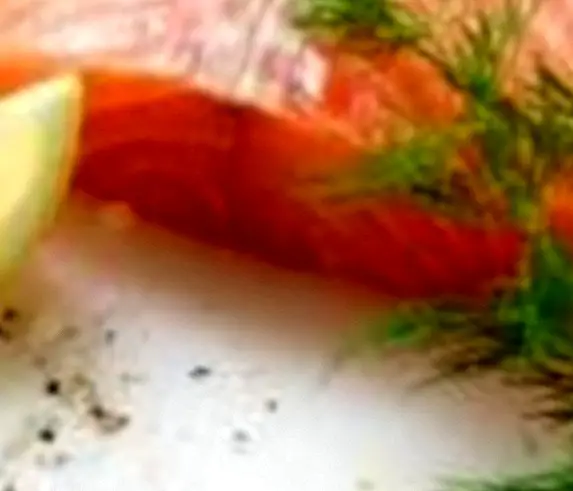Discover the gastronomy of the Canary Islands at Christmas
The Canary Islands they have a wide and rich gastronomy formed mainly by the typical or traditional dishes and desserts of the 7 islands that form it.
Some of these dishes that form this extensive gastronomy are typical or from one of the Islands, others however, are typical dishes of the 7 islands and are generally cooked in all the Islands. 
Fully immersed in this special time of Christmas, in NatureVia we wanted to pay homage and recognition to our gastronomy, the gastronomy of the Canary Islands.
The cuisine of the Canary Islands is a simple, rich and varied cuisine in which are present the fresh products of the land, of the cattle that are raised in the Islands, as well as the products that the sea of the Islands offers us.
We can also say that the gastronomy of the Canary Islands is a cuisine with a great tradition, transmitted from generation to generation and that, as with other gastronomies, has received many cultural contributions over the centuries.
The Canarian cuisine is known in many Latin countries, transported by generations of Canaries who had to emigrate in search of a better future in times of yesteryear.
Also the gastronomy of the Canary Islands has been enriched with the cultural influences that these countries contributed to the Canaries that returned to the Islands.
Below and by way of summary, we provide information on the dishes that are made in the Canary Islands, both at Christmas and during the rest of the year and in some occasions when there is a special event to be held.
Starters
The appetizers or in yesques as popular form is known as the appetizer in some Islands especially on the island of Gran Canaria some of these starters have gained much fame as is the case of potatoes wrinkled with mojo (red or green mojo). 
Other mojos that are made in the Islands are: almond mojo, cilantro mojo or Palmero mojo.
Other entrants are:
They are tremendously popular dishes such as gofio escaldado, pella de gofio, olives with mojo, pork rinds, assorted cheeses from the islands, almogrote, sweet blood sausage, chorizo, chuchangos or snails, roasted limpets with mojo, squid and octopus jareados, fish jareado or jarea , pejines, longorones, octopus, fish or roe splashes.
Burgados or burgaos as they are known here, fried moray, sardines and mackerel with mojo, chicharros with mojo.
First courses and second courses
Especially noteworthy are the Canarian ranch, stew, old clothes, ribs with potatoes and pineapple, or carajacas. Potages are an important part of the Canarian cuisine, watercress stew, stew of cabbage, stew of jaramago, lentil stew, vegetable stew, fennel stew, wheat stew, spinach and chickpea stew, milk stew traditional on the Island of La Palma, traditional soup of peas from the Island of Lanzarote. 
The broths: millet broth, peas broth, potato broth with eggs, cilantro broth, stew broth, chicken broth, pigeon broth, fish broth.
The soups: chicken soup, chicken soup, picadillo soup from the Island of La Palma, fish soup, seafood soup.
The Creams: pumpkin cream, cream of spinach, cream of peas, cream of carrots, cream of zucchini, cream of vegetables.
Legumes: Composed lentils or chickpeas, chickpeas, sautéed beans, peas, vinaigrette beans.
The rice dishes: yellow rice with meat, yellow rice with chicken, yellow rice with rabbit, yellow rice with pork, yellow rice with fish, yellow rice with squid, yellow rice with octopus, yellow rice with limpets and burgaos.
They also highlight the typical dishes made with different types of meat such as lamb, goat, cow, pig, rabbit, chicken, chicken.
Cow meat: roasted vein, vein in sauce, festive meat or meat in sauce with potatoes. 
Mutton: suckling lamb in sauce, lamb in sauce, lamb leg roasted or baked, lamb chops in fried or baked sauce.
Goat meat: goat meat in adobo or marinated, goat meat in sauce, fried goat meat, kid in sauce, roasted kid.
Pork Meat: marinated pork, fried pork, fried or grilled pork chops, roast pork leg.
Chicken meat: Chicken in marinade, chicken in sauce, fried chicken, roasted chicken.
Typical fish dishes: sancocho, fish with onions, fish with boiled mojo, roasted or baked fish, fried fish assorted, fried longorones, old sancochada, chocos in sauce, calamari in sauce, pota in sauce, octopus in sauce, tollos in sauce, tuna in marinade, Fried octopus, old octopus clothes.
Desserts: frangollo, quesillo, roasted milk, fried milk, dulce de leche, huevos mole, prince Alberto, gofio mouse, arroz con leche, custard, cottage cheese, plantains cut with squeezed orange and cookies.
Sweets: bienmesabe, marzipan, sweet potato trout, angel hair trout, almond nougat and honey, quesadilla, cheese cakes, banana pancakes, flour pancakes, pumpkin pancakes, angel hair sweet, guava paste, sweet sweet potato, honey soups, almond cheese, rapadura, pralines of peanuts, pralines of almonds, roscos de vino, almond mantecados, sweet potato buns. And how could it be less, the popular sweet potato trouts. 
Fruits: Canarian banana, figs, grapes, avocados, mangoes, papayas, country fruits like, oranges, apples, plums, guavas, pears, peaches.
As you will have seen, it is a very broad and varied gastronomy, with simple and elaborate dishes as well as exquisite dishes.
Many of these dishes are also present in the cuisine that is prepared in the Canary Islands to celebrate Christmas.
From NatureVia we encourage you to prepare some of these delicious dishes, with which you will surely surprise your guests this Christmas.
In the following post of NatureVia we will be facilitating some of these recipes.
Merry Christmas and Happy New Year 2017 for everyone! ThemesChristmas



